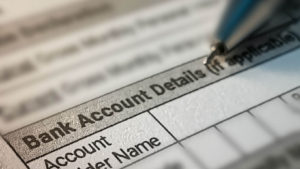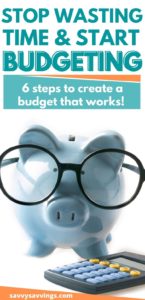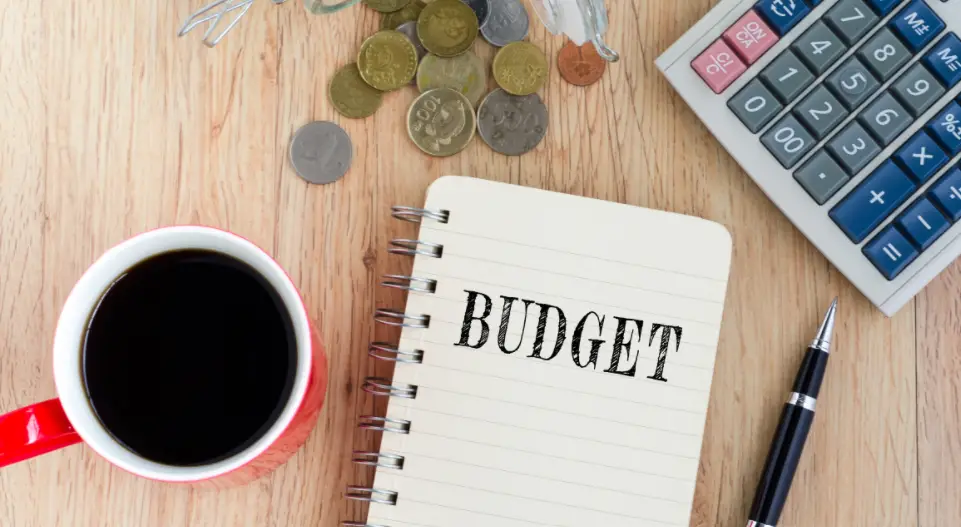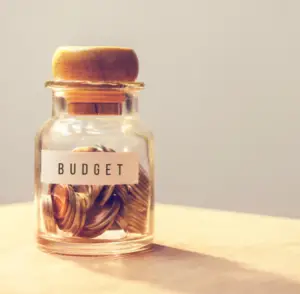I used to live my life paycheck to paycheck, not really saving anything, building up credit card debt, and always playing catch up. Until I finally figured out a way to create a biweekly budget that worked for me!
I spent hours researching and learning, and after a while, it finally clicked! I took different tips and techniques and combined them to create a system that works for me.
My system may not work for everyone. But maybe one or two of the aspects will work for you and will help you get closer to a more fully developed budget!
Planning a personal budget is difficult. But once you have a fully developed budget that works for you, you can utilize it to help you get out of debt, save for large expenses, or retire early!
The sky is the limit!
But first, sign up to get your Free Spending Spreadsheet here to help you track your expenses and create your budget!
Related Posts:
The Best Way To Track Your Expenses in The New Year!
Ways to Save Money on a Tight Budget and Not Hate Your Life!

Step 1: Figure out your Fixed Expenses for every Month
This is the easiest step, or at least I hope this the easiest step for you. Figuring out your fixed expenses each month should be quick and simple as these don’t change and you have to pay them every month.
Total up all of your expenses that stay the same, or about the same, every month. This includes your rent/mortgage, power, gas, cell phone, car payment, insurance, etc.
My power bill comes every 2 months. So I averaged out all my power bills for the previous year and divided that number by 12 (then again by 3 since I live with 2 other people) to get to the number I added to my monthly total.
Then total them all up to get your monthly fixed expenses amount, add a few dollars to make it an even number, and to give yourself a buffer.
Next, I took my total for all of my fixed expenses and divided it by 2 since I get paid bi-weekly, or twice a month. This will vary depending on how often you get paid.
You can easily do this same process for weekly paychecks. However, if you have irregular income this may be a little more difficult.
If you do get paid weekly, I would divide your bills by 4, since that is the typical number of weeks in a month.
But splitting up your fixed expenses evenly between paychecks will ensure that you are not overly strained at any point during the month!
Step 2: Figure out your Variable Expenses for every Month
This step is typically a little more difficult. It took me a while to figure out how much I was spending every month on variable expenses.
One reason it took a while was that I was trying to use everyone else’s recommendation and tried fitting my expenses into recommended budget percentages for each month (for example clothes, food, etc).
This was hard for me to do because I don’t buy clothes every month and the amount I spend on food varies wildly. Sometimes I eat out and sometimes I don’t, which increases my food bill for the month.
So making budgets focusing on percentages I was “supposed” to follow every month didn’t quite work for me. And I got discouraged.
After tracking my variable expenses for a while, what I eventually decided to do was to lump my variable expenses into an “allowance” amount that I give myself each week to spend.
My allowance amount per week has changed over the years as I have changed it whenever I re-evaluate my spending/income.
Also, if I spend a little more in one week, I dip into my next week’s “allowance”, if I spend less, then I add it to the next week.
(Spoiler alert – I hardly ever spend less than my weekly allowance but often go over. Hey, no one is perfect!)
This way I hold myself accountable and don’t dip into any savings accounts, which leads me to the next step!

Step 3: Figure out your Savings Amount and/or Debt Payoff Amount
This step is just a straight calculation. Take your take-home pay amount for one paycheck and subtract your fixed expenses number and subtract the amount you decided on for your variable expenses for that pay period.
The number that is left is what you should be using to either pay-off debt or save!
*Your take-home pay should be after you save in an employer-sponsored savings account like a 401k, if you have one. Check out my post on how to save money even on a tight budget!
Saving Money

If you don’t have any debt to pay-off, I would recommend that you take the savings amount and split it up into a few categories depending on your financial goals. These will be different for everyone!
But as an example, I would recommend at least one savings goal for long-term items and one savings goal for short-term items.
Short-Term Savings
So outside of my variable expenses, I often have larger ticket items to pay for. I used to use a credit card to pay for larger items, then pay it off as I went (while avoiding interest, as I detailed in my post about credit cards).
But now, I make sure I have the cash in the bank for those larger items in advance. Some of these items I plan for and some of them are a surprise, but either way, I have a buffer in a savings account to cover these.
This is where a short-term savings account comes into play. Depending on how often you have expenses like this pop up (car repairs, larger furniture purchases, etc), decide on a total you are comfortable with having in a short-term savings account and then split that number up between multiple paychecks until you hit your goal. Or this could be an account you constantly add to as you use it often.
I would recommend saving this in a savings account with the same bank as your regular checking or one that is easily accessible by transferring.
Long-Term Savings
Then the rest I would save towards long-term financial goals, like a down payment for a house, or a large vacation, or in an after-tax retirement account, or anything else that is important to you and is further down the road!
I would recommend saving this in a separate account at a different bank than your regular checking account so that you aren’t tempted to dip into it often. Make sure you automate this saving so that you don’t have to think about it as well!
Step 4: Open a Second Checking Account for your Bills Only
This is something I found super helpful when creating my bi-weekly budget!
I found that having a separate account for bills helped a lot and made my budgeting easier to have my fixed bills separated from my variable expenses.
Bank Bonuses
Also, a BONUS TIP: you can even make money when you open a new bank account with bank bonuses!
Make sure to follow all of the rules carefully, but this is a great money maker! I use the Doctor of Credit website to find the best bank bonuses available at the moment when I’m ready to open a new account.
Many banks offer bank bonuses when you sign up for a new account with them. Chase Bank and Wells Fargo are some of the best offers I have seen, with Chase being one of the easiest to earn. (It doesn’t look like Wells Fargo has an active offer at the moment.)
Sofi is also an awesome bank to look into. It is an online bank and it doesn’t have any minimum account balance required which is nice. Using this link you can make $50 the day after you transfer $500 into the account! That is quick, no waiting, no setting up a direct deposit. You can also get 10% back on groceries and streaming services right now. These categories can change though so keep an eye out.
This is free money you should not leave on the table when you are opening a new account. While you are at it, you can open a new savings account, as well, for those long-term savings!

Step 5: Set up your Direct Deposit to your New Accounts for Bills and Savings
A lot of people set up their direct deposit when they start at a new job and never change it. They don’t realize how easy it is to change at most employers today.
It may take some digging, but there is typically a link in your employer portal to your direct deposit.
You can change it whenever and however often as you would like! You can choose specific amounts that you want to be deposited into different accounts, then the remainder of your paycheck will go into your main account.
There is usually a cut-off date to make sure any changes take effect, so if I need to make changes to mine, I wait for my current paycheck to be deposited, then make the change that day or the following day so that it will take effect for my next paycheck.
Step 6: Sit Back and Enjoy your New Biweekly Budget! And Re-evaluate whenever Needed
Now you can sit back, relax, and enjoy your new bi-weekly budget. If you did set up your variable expenses on a weekly basis, then I suggest you make sure to set up a time every week to check those expenses.
For me, the “week” I use for budgeting purposes runs from Wednesday to Tuesday. Every Monday morning I log into my credit card accounts just to look at everything I spent over the weekend (which is when I spend a majority of my money) and I track it into my spreadsheet.
Check out my post on how to track expenses in the new year!
But I do wait a few days to finalize everything because it takes time for charges to fully process.
So sometime between Wednesday and Friday (usually Fridays) I go in and pay those expenses from the week before. You can do all of this on one day of the week if you want. I just like to keep an eye on everything at all times so I know exactly where every penny is.
If you don’t like to be worried about it all the time, you can do this every two weeks or on a different schedule that works for you!
Then you should re-evaluate your budget whenever you feel like it is needed. I re-evaluate my budget at least every year and again if I get a pay raise.
When you first set your budget up, though, I would recommend re-evaluating it after 6 months just to check in to see what is working and what isn’t and make adjustments as needed!

Biweekly Budget Conclusion
I think most people see budgeting as a bad thing that they dread. But in reality, budgeting your money is like granting yourself freedom from debt and bad financial decisions!
I hope you enjoyed this post! Please comment below if you feel you are successful at budgeting or not!
Check out my post on 12 Things I Stopped Buying to Save Money as well!
And sign up for a Free Holiday Budget Planner!





